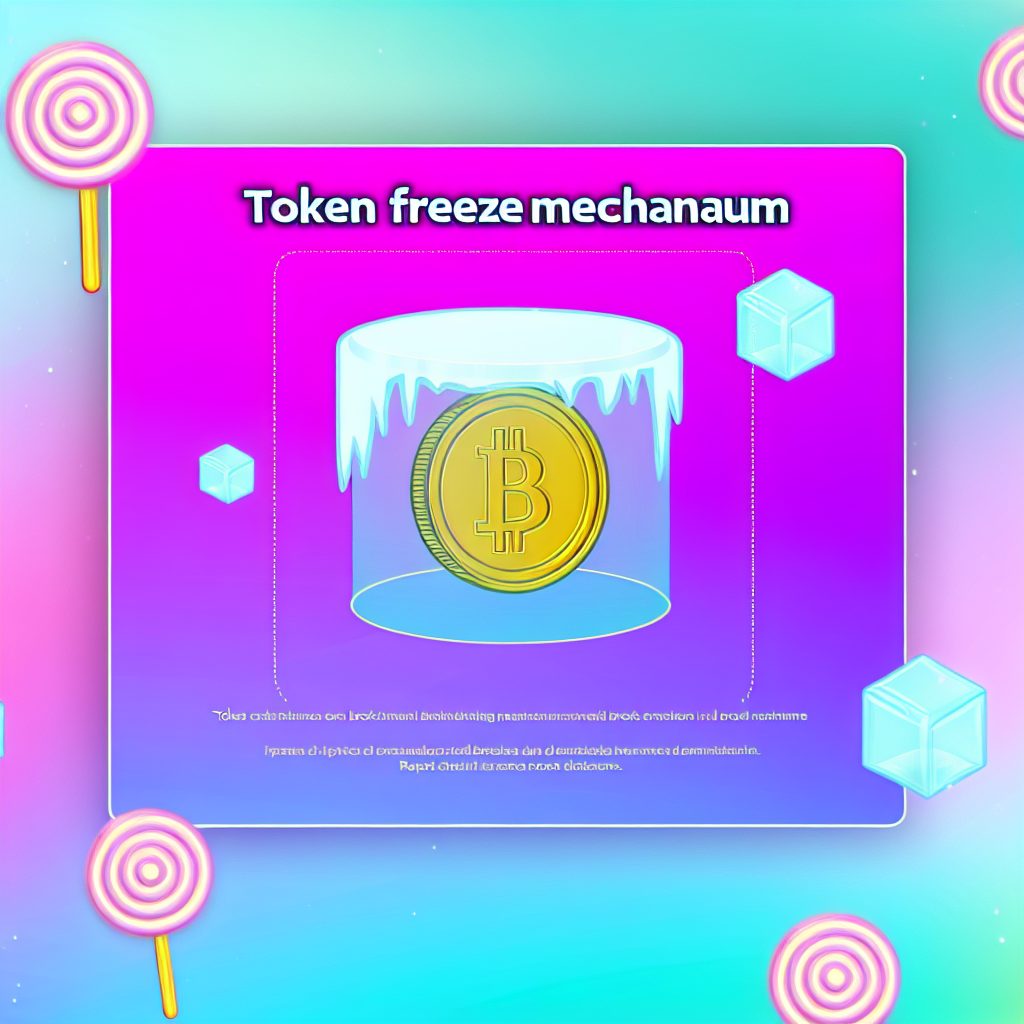Understanding the Token Freeze Mechanism in Cryptocurrency
The cryptocurrency landscape is filled with innovative concepts and mechanisms designed to enhance security, governance, and user trust. One such mechanism is the token freeze mechanism, which plays a crucial role in managing tokens within various blockchain ecosystems. This article delves into what a token freeze mechanism is, its importance, how it works, and its implications for the cryptocurrency industry.
What is a Token Freeze Mechanism?
A token freeze mechanism is a feature implemented in certain blockchain protocols that allows for the temporary suspension of token transactions. This mechanism can be activated under specific conditions, such as security breaches, regulatory compliance, or governance decisions. The primary goal of a token freeze is to protect the integrity of the network and its users by preventing unauthorized transactions or mitigating the impact of malicious activities.
How Does a Token Freeze Mechanism Work?
The operation of a token freeze mechanism typically involves several key components:
- Smart Contracts: Most token freeze mechanisms are governed by smart contracts, which are self-executing contracts with the terms of the agreement directly written into code. These contracts define the conditions under which tokens can be frozen.
- Governance Protocols: Many blockchain networks have governance protocols that allow token holders to vote on whether to initiate a freeze. This democratic approach ensures that the community has a say in critical decisions.
- Notification Systems: When a freeze is initiated, affected users are typically notified through various channels, ensuring transparency and communication.
When a freeze is activated, the tokens in question are rendered inactive, meaning they cannot be transferred or traded until the freeze is lifted. This can be a temporary measure or a more permanent solution, depending on the circumstances.
Importance of Token Freeze Mechanisms
The significance of token freeze mechanisms in the cryptocurrency industry cannot be overstated. Here are some of the primary reasons why they are essential:
- Security: Token freezes can prevent the loss of funds during security breaches or hacks. By freezing tokens, networks can halt unauthorized transactions and protect user assets.
- Regulatory Compliance: As governments around the world tighten regulations on cryptocurrencies, token freeze mechanisms can help projects comply with legal requirements, such as freezing tokens associated with illicit activities.
- Community Trust: Implementing a token freeze mechanism can enhance user trust in a project. Knowing that there are measures in place to protect their investments can encourage more users to participate in the ecosystem.
Real-World Applications of Token Freeze Mechanisms
Several blockchain projects have successfully implemented token freeze mechanisms to address various challenges. Here are a few notable examples:

1. Ethereum
Ethereum, one of the largest blockchain platforms, has seen instances where token freezes were necessary. For example, during the DAO hack in 2016, Ethereum developers proposed a hard fork to reverse the effects of the hack. While this was not a traditional token freeze, it showcased the community’s ability to intervene and protect users’ funds.
2. Binance Smart Chain
Binance Smart Chain (BSC) has implemented a token freeze mechanism to combat fraud and protect users. In cases where tokens are found to be involved in scams or hacks, the BSC team can freeze the affected tokens, preventing further transactions and allowing for investigations.
3. Tether (USDT)
Tether, a widely used stablecoin, has a token freeze mechanism that allows it to freeze tokens that are suspected of being involved in illegal activities. This feature is crucial for maintaining compliance with regulatory standards and ensuring the integrity of the stablecoin.
Challenges and Criticisms of Token Freeze Mechanisms
While token freeze mechanisms offer several benefits, they are not without challenges and criticisms:
- Centralization Concerns: Critics argue that token freeze mechanisms can lead to centralization, as they often require a central authority or governance body to initiate a freeze. This can undermine the decentralized ethos of blockchain technology.
- Potential for Abuse: There is a risk that token freeze mechanisms could be abused by those in power, leading to unjust freezes that harm users and stifle innovation.
- User Trust: While these mechanisms can enhance trust, they can also create fear among users who worry about the potential for their tokens to be frozen without due process.
Future of Token Freeze Mechanisms
The future of token freeze mechanisms is likely to evolve as the cryptocurrency industry matures. Here are some potential trends:
- Enhanced Governance Models: As decentralized governance models become more prevalent, token freeze mechanisms may evolve to incorporate more democratic processes, allowing users to have a greater say in decisions.
- Integration with Regulatory Frameworks: As regulations around cryptocurrencies become more defined, token freeze mechanisms may be integrated into compliance frameworks, ensuring that projects can operate within legal boundaries.
- Improved Transparency: Future implementations may focus on enhancing transparency around the conditions and processes for freezing tokens, helping to build user trust.
FAQs about Token Freeze Mechanisms
What happens when a token is frozen?
When a token is frozen, it cannot be transferred or traded until the freeze is lifted. This is typically done to protect users and the network from potential threats.
Who can initiate a token freeze?
Token freezes are usually initiated by a governance body or through a smart contract that has been programmed to respond to specific conditions, such as security breaches or regulatory requirements.
Can a token freeze be reversed?
Yes, a token freeze can be reversed once the conditions that led to the freeze have been resolved. This process typically involves a vote from the governance body or a predetermined protocol.
Are all cryptocurrencies equipped with token freeze mechanisms?
No, not all cryptocurrencies have token freeze mechanisms. The implementation of such features depends on the specific goals and governance structures of each blockchain project.
Conclusion
The token freeze mechanism is a vital tool in the cryptocurrency industry, providing security, regulatory compliance, and community trust. While it presents challenges, its benefits are significant, especially in an era where security and trust are paramount. As the industry continues to evolve, so too will the mechanisms that govern it, potentially leading to more robust and user-friendly solutions.
For the latest updates on cryptocurrency news and price tracking, consider visiting Bitrabo. Stay connected with me on social media for more insights: X, Instagram, and Threads.
Disclaimer: The information provided in this article is for informational purposes only and should not be considered financial advice. Always conduct your own research before making investment decisions.
The Crypto Watchlist of the Week 🔎
Subscribe to receive expert-curated projects with real potential—plus trends, risks, and insights that matter. Get handpicked crypto projects, deep analysis & market updates delivered to you.


